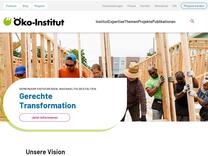Are economic principles a driver or a barrier for energy efficiency and climate policy? | oeko.de https://www.oeko.de/publikation/are-economic-principles-a-driver-or-a-barrier-for-energy-efficiency-and-climate-policy/
Economic principles are at the heart of key policies addressing or affecting energy efficiency. Minimum energy performance standards are typically based on an economic efficiency principle, where the ambition of the minimum requirements depends on economic costs and benefits. Examples from different governance levels include the least-life-cycle-costs approach in the EU Ecodesign Directive, the cost-optimality approach in the EU Energy Performance of Buildings Directive and the German building codes, where the requirement for micro-level cost efficiency acts as barrier for setting more ambitious standards. Also, some public procurement approaches are based on economic principles, where requirements to include life-cycle costs and/or external environmental costs can provide a driver for the uptake of energy efficiency technologies. In view of the fundamental role of energy efficiency policy for reaching climate targets, this article addresses the question how innovative approaches to use economic principles in policy formulation can foster the deployment of energy efficiency solutions. To this end, we analyse different approaches for using economic principles in minimum energy performance standards and in public procurement processes, including the recently introduced requirement to consider the costs of climate action in Federal procurement processes specified in the German Federal Climate Change Act. We derive recommendations on how to use economic principles in policy formulation as a driver rather than a barrier for the deployment of energy efficiency solutions.
11.10.2021 Publikationen Energie & Klimaschutz Bücher & Fachartikel

